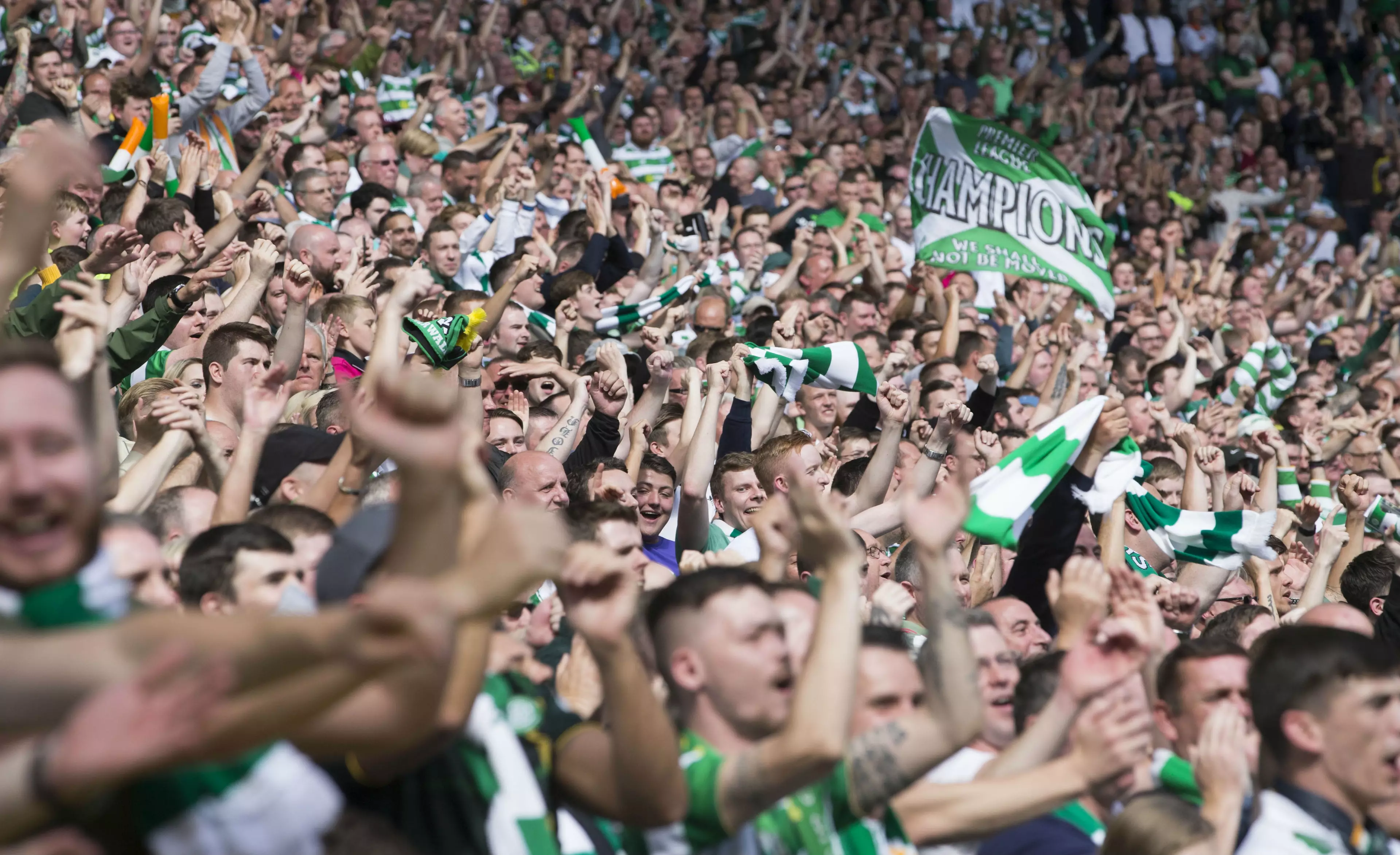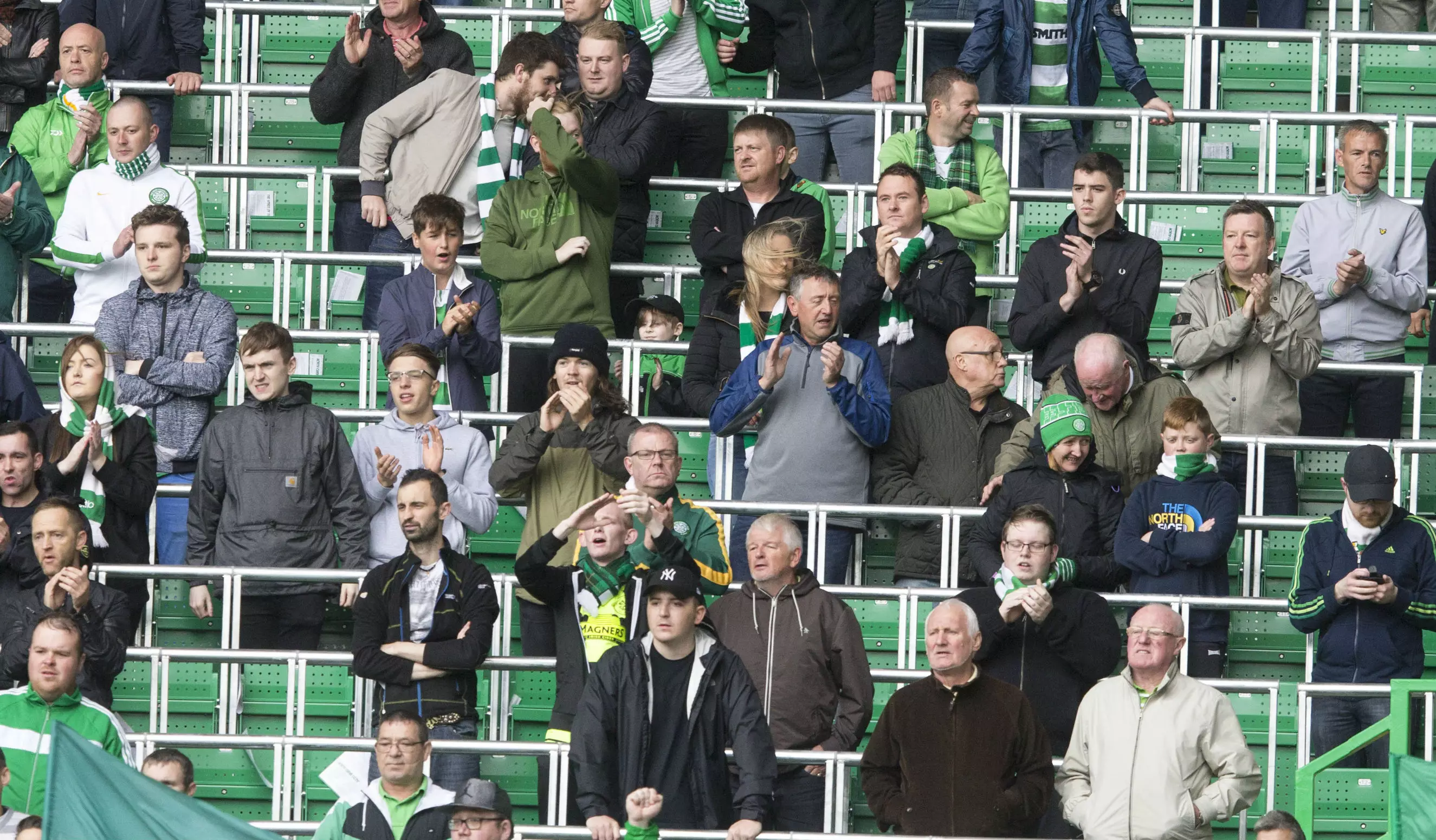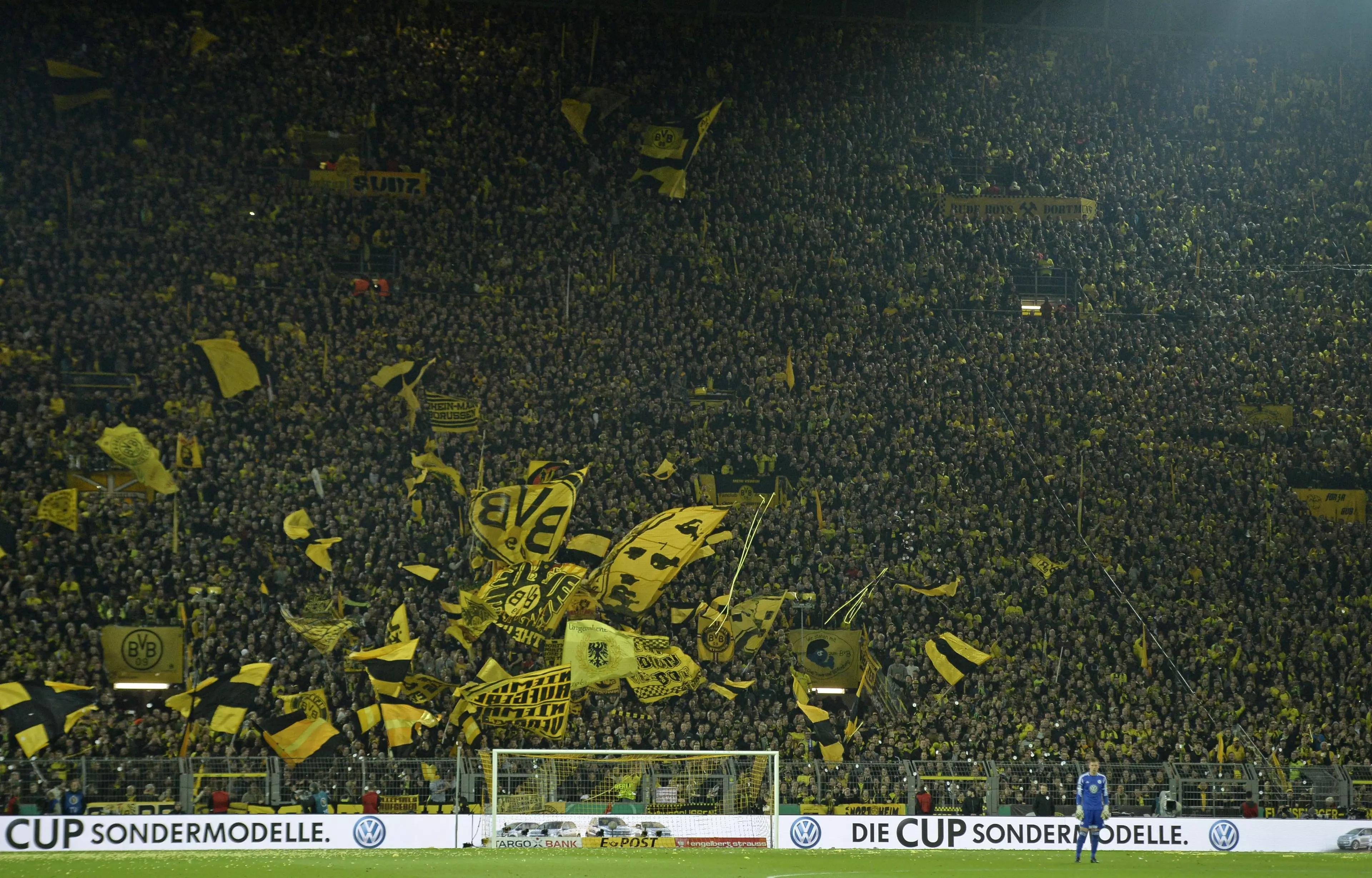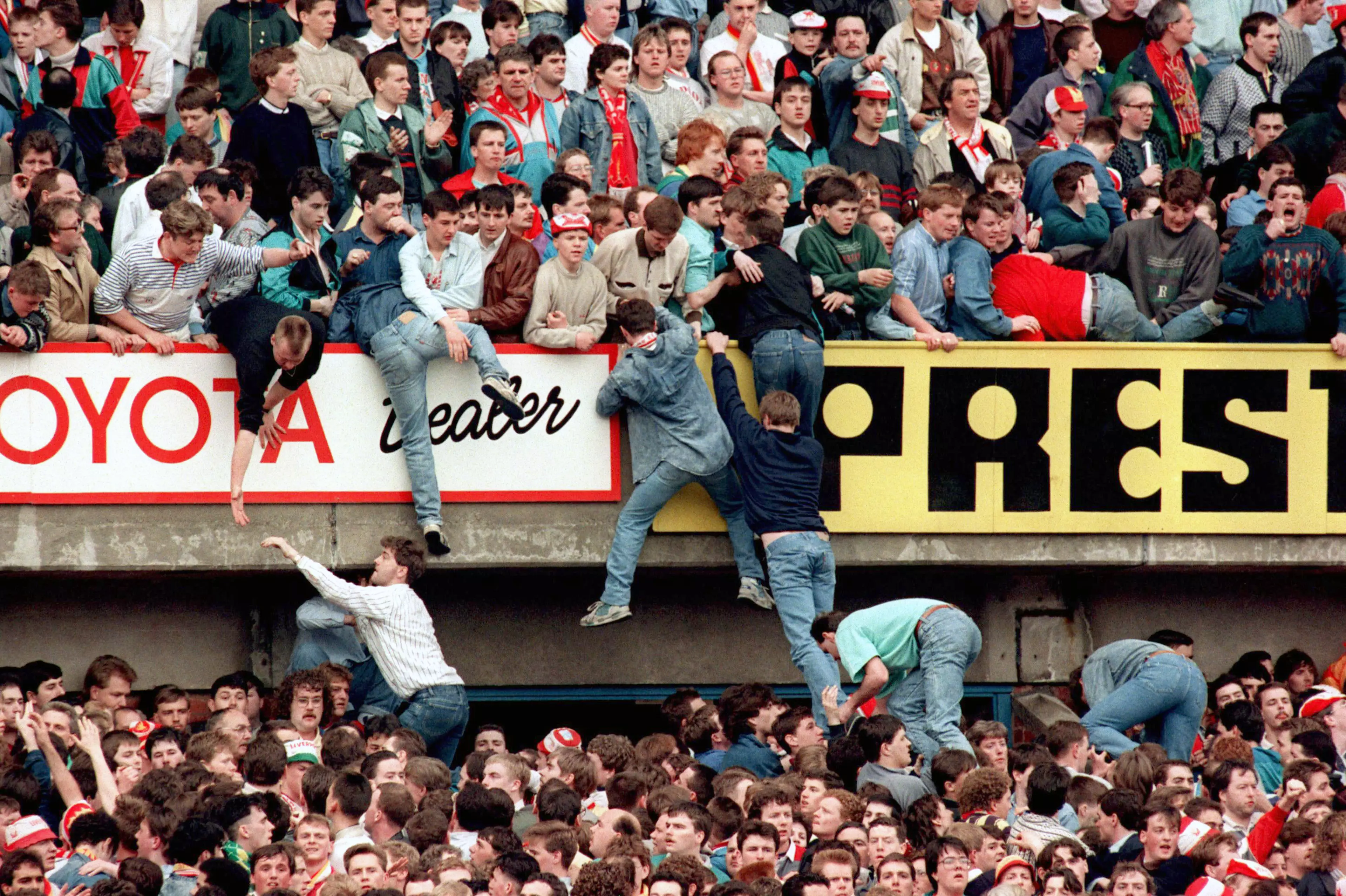
Standing terraces are often seen as a thing of the past in England. Such areas are filed alongside cup final songs and Danny Baker videos as things which have been consigned to FA Cup ties at lower league grounds. While terraces have been illegal in the top two divisions of English football since the mid-1990s, there is a growing movement that is campaigning to have standing brought back to the Premier League. The goal is to bring the atmosphere of the terrace back, but in a much safer environment. In Scotland, it already exists.
Ask a Celtic fan what their highlight of the season is thus far and it wouldn't be the ongoing Brendan Rodgers revolution in the East End of Glasgow or the club's monstrous lead at the top of the Scottish Premiership. There's a good chance that supporters will tell you that it's the new standing section which occupies the north-east corner of Celtic Park.
"The standing section, along with the arrival of Brendan Rodgers and an instantly successful team, has made for a seismic shift in atmosphere at Celtic Park", said Daniel, who has attended every domestic game this season and holds a season ticket in the safe-standing section. TheLADbible met up with Daniel for the 2-0 victory over Ross County in December to have a look around.

Image Credit: PA Images; Celtic's standing section creates a unique atmosphere
Advert
As you enter, the first thing that strikes you is the size of it. An English supporter is used to dinky, ramshackle standing terraces at Rochdale or Carlisle, whereas Celtic Park is a totally different animal. The section capacity is 2,600, covering what was once three blocks spread around the corner of the stadium. While attendances at Parkhead dwindled under previous manager Ronny Deila, the faithful are back out in force under Rodgers and it's the standing section that's leading the way.
That isn't to say that those in the newly-named North Curve are fair-weather fans. Quite the opposite. To get a ticket - and it is all season-ticket - supporters had to be an existing (read Deila era) holder and then tick a box on the renewal form to indicate they wished to be moved to the new section. The waiting list is in the thousands. Additionally, one of the key elements in making the section happen, and indeed making it what it is, is the leadership of the Green Brigade, Celtic's ultra group.
The Green Brigade have garnered admiration and ire pretty much constantly since their foundation in 2006, but after a decade on the terraces, they're finally...well... on a terrace. I had previously attended games at the old 111 section - now at the centre of the standing area - and the singing and the atmosphere was often confined to the upper reaches of the lower tier and the hard cadre of the Green Brigade. Now, with the ultras located at the front of the standing section, the singing travels upwards through the section and out into the stadium, encouraging wider participation.
The effect on the support is also evident through a huge range of new songs that have taken off since the move. Because the capos - the men with the megaphones who lead the singing - are now in front of the whole block as opposed to halfway up it. The coordination is much improved and the participation is far greater. That famed Celtic Park atmosphere doesn't happen by accident. Similarly, the standing environment seems to have galvanised the support into giving far more energy than in the past. There are almost no smart phones - the scourge of English Premier League grounds - with more people filming the singing than singing themselves. Indeed, the safe-standing experience is almost completely safe and enjoyable.
Celtic took advantage of the fact that Scotland was never included in the law banning terraces, the Football Spectators Act of 1989. Celtic needed only to apply to Glasgow City Council, rather than waiting on the act of Parliament that would be required to introduce such a section at an English ground. The club began consultation in 2011, gained approval in 2015 and subsequently made the renovations in time for the 2016 season.
Safe-standing areas, of course, have long been allowed on the continent, most notably in Germany, Austria and the Netherlands. The method of standing offered differs.
Some standing sections, such as Borussia Dortmund's famous Yellow Wall, are open terraces, not dissimilar to the terraces of old, but to which seats can be added for European and international games, where an all-seater environment is mandatory.

Credit: PA Images; Dortmund's Famous Yellow Wall is an icon of 21st Century football
Advert
By far the more common option, however, is rail seating. Celtic, and indeed most clubs in higher divisions, use this system, where there is a rail to hold in a standing match with a seat attached and locked upright. These seats can easily be unlocked for all-seater games when required. This means every spectator has an assigned seat, but instead stands in front of it, allowing for each fan to have a guaranteed place and removing the opportunity for a dangerous crush.
The majority of Premier League clubs - indeed every club aside from Liverpool - have said that they would be open to allowing the terraces to return to their stadia, or at the very least, to have a word in the process. Manchester United are actively asking their season ticket holders and sent out a message about the matter in December. West Bromwich Albion have travelled to Glasgow to view the set-up at Celtic Park, and are open to trialling standing at The Hawthorns.

Credit: PA Images; The Hillsborough disaster left a scar on the world
Advert
Liverpool have long been the greatest opponents of the re-introduction of standing. It was the Hillsborough disaster in 1989 - in which 96 of their supporters were crushed to death while attending an FA Cup semi-final game at Hillsborough Stadium in Sheffield - that led to the Taylor Report and subsequently the ban on standing at football in England. While the report recommended that standing terraces should be phased out, it also declared that poor crowd management and an aging, unsafe stadium were the main causes of the tragedy, and that there was nothing inherently dangerous about standing.
Groups of Liverpool supporters have begun to warm to the idea, with the Hillsborough Justice Campaign posting on Facebook that they support a full and objective debate on the issue. The Liverpool supporters' union, Spirit of Shankly, have also passed a motion in favour of rail seating. The Football Supporters' Foundation are unequivocal, as they have said: "Standing is permitted at rugby union and rugby league venues, as well as at speedway and horse-racing. It is also permitted at football grounds outside the top two divisions. We see no justification why top-level football clubs should be treated differently."
Perhaps they will get their wish sooner rather than later.
Words: Mike Meehall Wood
Featured Image Credit: PA Images